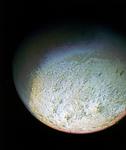Inventing Reality: A Guide to Writing Science Fiction
Setting
What is setting?
Many readers choose science fiction over other genres simply for the imaginative locations and the adventure of exploring these environments.
Place
Stories always occur somewhere – a starship traveling between the stars, another planet, a science lab on Earth a few years from now, an android factory or any of a million other places.
Time
Stories don’t just happen somewhere, they happen at some time – the far future, the 23rd century, a decade or two from now, the distant past, the present.
Description
When creating your story’s setting or explaining what your characters are doing, you’ll need to use description. Description is necessary to move along the plot, to create tone.
Sight
The easiest of the five senses to write is that of sight. It’s easy because humans are by nature visual animals.
Sound
We’re surrounded all day by sounds, though most of it is tuned out. When we do hear something out of the ordinary – an alarm, the crunch of metal when cars collide, the annoying repetition of a water drip – it stands out.
Smell
Writers ought to find a way to incorporate at least one appeal to the sense of smell in their story, if only to make the story more real. The key is to get it purposefully into the story and not just to make the writing more vivid for vividness’ own sake.
Touch
As with the scents, we’re constantly barraged with the sensation of touch, but often it goes ignored.
Taste
Of the five senses, taste is the rarest in stories.
White room syndrome
Rather than fully imagine such a world, some writers instead create a quick, unformed facsimile of their own. This is known as “white room syndrome”.
Chekhov's gun
You’ve probably read several stories in which upon reading their climax in which the hero uses some object to help him achieve victory, thought to yourself, “Hey, that object was mentioned earlier in the story.”
Reaction shot
A term commonly used in science fiction workshops and critiques, a reaction shot is a cut away from the narrative to show a character’s emotional response.
Rear-view mirror descriptions
When writing action scenes, avoiding rear-view mirror descriptions typically is a good idea. In such a description, an object is described only after they’ve been part of the action.
Organ music
Sometimes when attempting to create tension and suspense in a story, writers can undercut their own efforts by adding “organ music.”
Rhinoceros in the room
When describing the setting, be careful not to place a “rhinoceros in the room" - some item or attribute that is obvious to everyone except the people closest to it.
Exposition
Want to slow your story to a glacial grind and get readers to put down your story? Then load it with lots of exposition.
Info dump
An info dump is a chunk of exposition that is insufficiently integrated into the story being told. It’s also known as an “expository lump” and is a specific kind of exposition.
Used furniture
When writers set a story in another author’s universe and then changes the names to conceal it, they are guilty of using “used furniture.”
Novum
One common understanding of what makes a story “science fiction” is it involves the intrusion of some new invention, discovery or alien being into a world not unlike our own. How this intrusion modifies the “real world” forms the thrust of the story.
